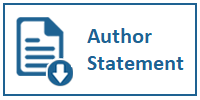Evaluasi Penerimaan Sistem Perencanaan dan Penilaian Anak Didik menggunakan Technology Acceptance Model
DOI:
https://doi.org/10.31937/si.v12i1.1593Abstract
Most teachers have difficulty in developing Learning Implementation Plans (RPP) due to the large number of instruments in the RPP that need to be made and adapted to the standard format. Likewise, when evaluating students, teachers need to look back at the lesson plan before conducting an assessment. Teacher activities in making lesson plans and assessing according to lesson plans are very time-consuming. Therefore, the Learning Planning and Assessment System for Students (SPADIK) was developed. This new application aimed to ease teacher effort in making learning plans and assessments for students at TK Khalifah Banjarmasin II. The teacher always welcomes the existence of new technology that can help their work. However, if the teacher cannot operate this new technology, they will certainly be in vain. Therefore, evaluation of acceptance of the SPADIK system is required by using the Technology Acceptance Model (TAM). This study uses a qualitative approach by conducting interviews with six kindergarten teachers of Khalifah Banjarmasin II, where this system was implemented. Data from interviews with teachers then reduced to a short description following the variables in the TAM model. From the results of testing with the TAM model, it was concluded that SPADIK could be accepted and used well by the teachers.
Index Terms”evaluation; information system; RPP; students assessment; Technology Acceptance Model (TAM)
Downloads
Downloads
Published
How to Cite
Issue
Section
License
Authors retain copyright and grant the journal right of first publication with the work simultaneously licensed under a Creative Commons Attribution-ShareAlike International License (CC-BY-SA 4.0) that allows others to share the work with an acknowledgement of the work's authorship and initial publication in this journal.
Authors are able to enter into separate, additional contractual arrangements for the non-exclusive distribution of the journal's published version of the work (e.g., post it to an institutional repository or publish it in a book), with an acknowledgement of its initial publication in this journal.
Copyright without Restrictions
The journal allows the author(s) to hold the copyright without restrictions and will retain publishing rights without restrictions.
The submitted papers are assumed to contain no proprietary material unprotected by patent or patent application; responsibility for technical content and for protection of proprietary material rests solely with the author(s) and their organizations and is not the responsibility of the ULTIMA InfoSys or its Editorial Staff. The main (first/corresponding) author is responsible for ensuring that the article has been seen and approved by all the other authors. It is the responsibility of the author to obtain all necessary copyright release permissions for the use of any copyrighted materials in the manuscript prior to the submission.















